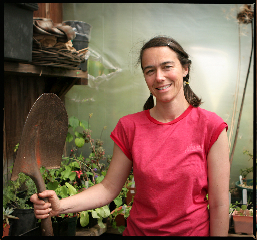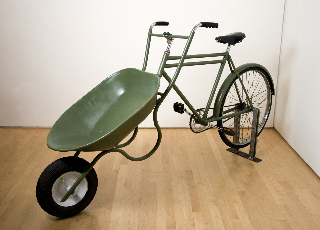 Toppled buildings, charred memories and flattened dreams don’t exactly signal hope for a better future to most people. That being the case, in the aftermath of the horrific 1906 San Francisco earthquake and fire, few people looked at the devastated city and thought of a chance for something better. However, as Simon Winchester described in his book A Crack in the Edge of the World, there was at least one man who found hope amid the hulking piles of detritus. That man was Daniel Burnham, the eminent Chicago-based architect and civic planner. Burnham’s plan for a new San Francisco, ironically developed shortly before the great disaster, envisioned a city in which grand parks and waterways kept the Citizens by the Bay in harmony with their natural surroundings. Unfortunately, the prevailing politicians decided to build the city as quickly as possible in the same way it had been before—over nature rather than amid it.
Toppled buildings, charred memories and flattened dreams don’t exactly signal hope for a better future to most people. That being the case, in the aftermath of the horrific 1906 San Francisco earthquake and fire, few people looked at the devastated city and thought of a chance for something better. However, as Simon Winchester described in his book A Crack in the Edge of the World, there was at least one man who found hope amid the hulking piles of detritus. That man was Daniel Burnham, the eminent Chicago-based architect and civic planner. Burnham’s plan for a new San Francisco, ironically developed shortly before the great disaster, envisioned a city in which grand parks and waterways kept the Citizens by the Bay in harmony with their natural surroundings. Unfortunately, the prevailing politicians decided to build the city as quickly as possible in the same way it had been before—over nature rather than amid it.
Like Burnham, San Francisco-based artist Amy Franceschini grew up outside The City. Her childhood was split between the orchards of her father’s vast commercial farming operation in the San Joaquin valley and her mother’s organic farm on the coast. Seeing firsthand these two very different methods of growing food gave her a unique perspective on how humans relate to their life-giving planet. After high school, she left the farms for San Francisco State University. The plan was to major in photojournalism and document the fascinating ways humans interact with the earth.
While her career as a photographer would end up not panning out, pursuing it did guide her to the font of her creative career. Franceschini was serving an internship at a monthly photo magazine when a graphic designer job came open at the publication. With a little coaching, she turned out to be a natural for the job. By 1995 she had co-founded both online magazine Atlas (www.atlasmagazine.com) and Futurefarmers, a design studio/artist collaborative specializing in creating entertaining ways to spark environmental dialogue. In the twelve years since, Franceschini’s design work has received rewards fattening both prestige and pocketbook. Not only did Atlas become the first website to be included in the permanent collection of the San Francisco Museum of Modern Art, but major corporations began paying Franceschini just to brainstorm design ideas for them. That is all terrific, Franceschini will tell you, but the key for her is that the commercial work feeds so well the projects that really matter.
It is tough to encapsulate into one easy title all the various project spearheading the thirty-six-year old Franceschini does. Perhaps it is best to refer to her as an Expert in the Field of Curiosity. Or maybe Environmental Inquisitor. It is important to note, however, that this Environmentalism is not necessarily in the Sierra Club/Green Peace sense. Yes, Franceschini is concerned with protecting the earth’s fragile balance. But she also deals with environmentalism in a much more immediate way: how do we interact with all our surroundings—both manmade and natural—and what can we do to ensure that relationship is healthy for both parties? This is where the Futurefarmers art comes in.
Whereas most artists think of their endless hours hunched over a computer as anything but soul-enriching, the ever analytical Franceschini constantly finds ways to use computers to bring out the brighter human qualities. For example, an application she learned for a design job can be also used to create a computer game people have to congregate to play—like the Futurefarmers project in which people explored, virtual-reality style, the 3D-modeled maze of their scanned fingerprints. An activity like this, Franceschini points out, not only uses computers to create human interactions, but it also gets attendees talking about the nature of their own relationships to machines.
The sheer number of these discipline-spanning, notion-rewiring projects Franceschini has developed over the years is astounding. Whether it is turning a park in Norway into a giant board game, designing a robot to run on photosynthesis, covertly landscaping toxic Silicon Valley Superfund sites, or “hacking public spaces,” Franceschini finds entertaining ways to get people off their asses and involved in exploring sustainable interlockings of technology, community, and nature.
In addition to her work as a new media artist, Franceschini is also a very old media artist—old as dirt. Like Daniel Burnham, she sees greening the San Francisco landscape as part of her larger plan. Unlike Burnham, Franceschini didn’t wait around for the government’s support. With her current Victory Gardens project, she is turning neglected front and back yards in San Francisco into visually pleasing food producers. Named for the US civilian agriculture programs implemented during World War I and II, Franceschini’s program seeks to revive the spirit that saw San Franciscans turning large sections of the city into gardens. Ironically, instead of a war triumph, the Victory in the title of her two year pilot program could now refer to a climate of sustainability that keeps the US from having to go to war. But it’s not all so serious-minded. Along with education and seed bank programs are suggestions for planting parties and cute but practical gardening implements. Franceschini wants to make gardening fun, so people will look at it not as a chore, but as a life-enriching activity. Already Franceschini and collaborators have given three free gardens to homes in San Francisco. Additionally, plans have been developed to scale up the program. The hope is that Victory Gardens will eventually be incorporated, as policy, into the city government. With several key city officials having publicly supported the program, that day may soon come. The San Francisco Museum of Art would surely back that notion. It recently awarded Franceschini a SECA award for artistic promise.

